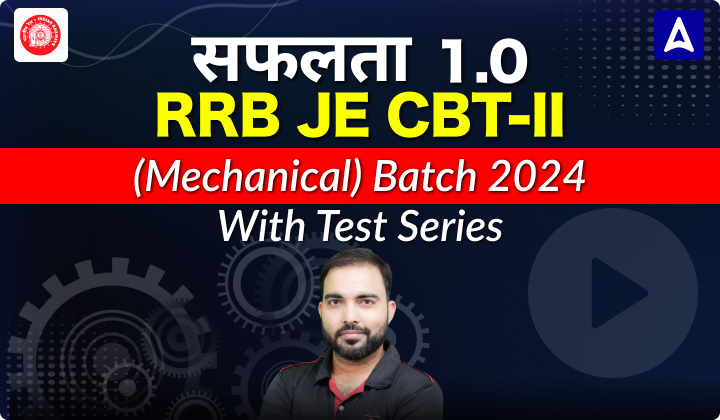Quiz: Mechanical Engineering
Exam: UPPSC Lecturer
Topic: Fluid Mechanics
Each question carries 3 marks
Negative marking: 1 mark
Time: 6 Minutes
Q1. The discharge through a venturimeter is given as (with usual notation):

Q2. Bluff body surface…………………
(a) Is smooth so that friction can be neglected
(b) Coincides with stream lines
(c) Does not coincide with stream lines
(d) Perpendicular to stream lines
Q3. The head loss in a pipe of diameter d, carrying oil at a flow rate Q over a distance L is h. This pipe is replaced by another with half the diameter, all other things remaining same, the head loss in this case would be
(a) 0.5 h
(b) 2.0 h
(c) 8.0 h
(d) 32.0 h
Q4. As the depth of immersion of a vertical plane surface increase, the location of centre of pressure
(a) Falls closer to the centre of gravity of the area
(b) Moves away from the centre of gravity of the area
(c) Ultimately coincides with the centre of gravity of the area
(d) None of these
Q5. One stokes is equal to
(a) 1 cm²/s
(b) 1 m²/s
(c) 1 mm²/s
(d) 10 m²/s
Q6. What torque in Nm is required to give 3m³/s of water, a moment of momentum, so that it has a tangential velocity of 3 m/s at a distance of 1.8 m from the axis?
(a) 16200
(b) 157
(c) 2624
(d) 8138
Solutions
S1. Ans. (c)
Sol. Discharge through venturi-meter (Q) =
Q = (C_d A_1 A_2 √2gh)/(√(A_1^2-A_2^2 ) )
C_d= coefficient of discharge
S2. Ans. (c)
Sol. Drag force on different type of body
(1) Stream lined body – Body whose shape coincide with
(2) Bluff body → Body whose shape does not coinside with stream line
S3. Ans. (d)
Sol. head loss (h_f) = 8Q²/π²g fL/D^5
h_f∝ 1/D^5
(〖h_f〗_1 )/(〖h_f〗_2 ) = (D_2/D_1 )^5
h/(hf₂) = ((D/2)/D)^5
〖h_f〗_2 = 32h
S4. Ans. (a)
Sol. h ̅ c.p. = h ̅ + (Igxx sin^2 θ)/(h ̅A)
h ̅ c.p. – h ̅ = (Igxx sin^2 θ)/(h ̅A)
(Igxx sin^2 θ)/A = constant
Then h ̅ c.p. – h ̅ = const/(h ̅ )
→ As the depth of the surface Increases, h ̅ increases & (h ̅c.p. – h ̅) decreases so, centre of pressure shift towards centre of gravity.
S5. Ans.(a)
Sol. We know that (stoke is the unit of kinematic viscosity)
1 stoke = 10^(-4) m²/sec
1 stoke = 10^(-4)×10^4 (cm^2)/sec
1 stoke = 1 cm²/sec
S6. Ans.(a)
Sol. We know that the momentum of water is
F = ρaV²
F = ρQV
F = 1000×3×3
= 9000 N.
Moment of momentum i.e., torque required
τ= f×y
τ =9000×1.8
τ=16200 Nm


 How To Prepare RRB JE Exam Form Zero Lev...
How To Prepare RRB JE Exam Form Zero Lev...
 RRB JE Application Status 2024 Out at rr...
RRB JE Application Status 2024 Out at rr...
 RRB JE Admit Card 2024 @indianrailways.g...
RRB JE Admit Card 2024 @indianrailways.g...











